If you’re into painting, you may have encountered two popular tools – airbrush vs spray paint. Although they are both used for applying paint, they have critical differences. So, let’s dive in! Knowing which tool to use for a particular project can make all the difference in achieving the desired outcome. This article will explore the differences between airbrush and spray paint and provide tips on effectively using each.
What is an airbrush?
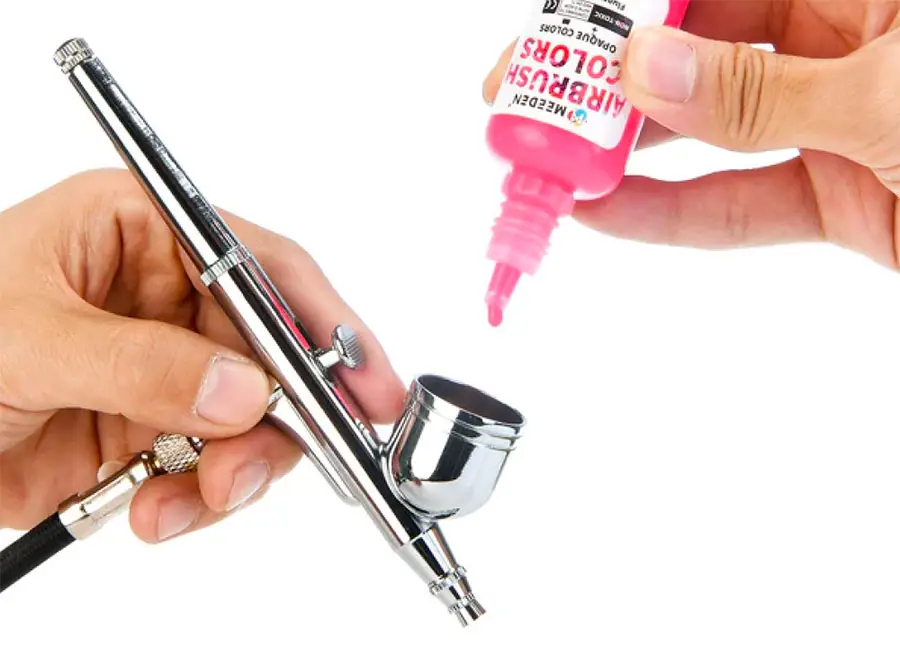
An airbrush is a small, handheld device that uses compressed air to spray paint onto a surface. It works by drawing paint into a chamber mixed with air and then spraying it through a nozzle onto the surface.
One advantage of using an airbrush is that it allows for greater precision and control when applying paint, making it ideal for detailed work. Additionally, airbrushes can create various effects, such as gradients, fades, and fine lines.
However, airbrushes also have some disadvantages. They can be more challenging than spray paint and require more maintenance. Additionally, airbrushes are typically more expensive than spray paint, which may make them less accessible for some artists.
An airbrush would be the best choice for projects that require fine details and precise control over paint application. For example, airbrushes are commonly used in automotive painting, illustration, and model-making.
What is spray paint?
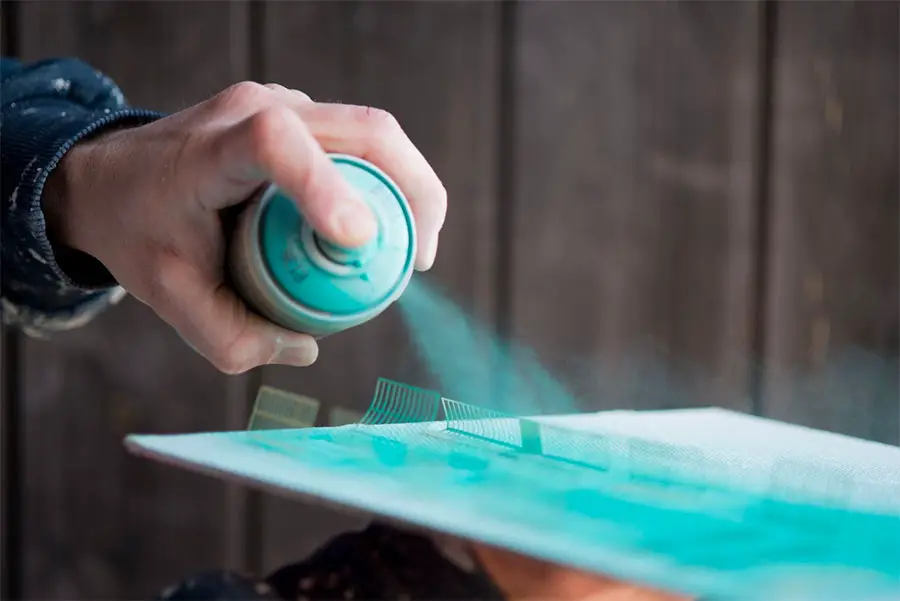
Spray paint is a type of paint that is packaged in an aerosol can and sprayed onto a surface using a nozzle. It uses compressed gas to force the paint out of the can in a fine mist.
One advantage of spray paint is that it is easy to use and requires minimal preparation. It can also be applied quickly and evenly, making it ideal for large projects. Additionally, spray paint is available in various colors and finishes, including metallics and textured finishes.
However, spray paint also has some disadvantages. It can be difficult to control the application of spray paint, which can result in uneven coverage and drips. Also, spray paint can be harmful if inhaled, requiring proper ventilation and safety precautions.
Spray paint would be the best choice for projects that require a large amount of paint to be applied quickly and evenly. For example, spray paint is commonly used for outdoor furniture, automotive painting, and graffiti art. It is also famous for DIY home decor projects, such as repainting old furniture.
Airbrush vs Spray Paint
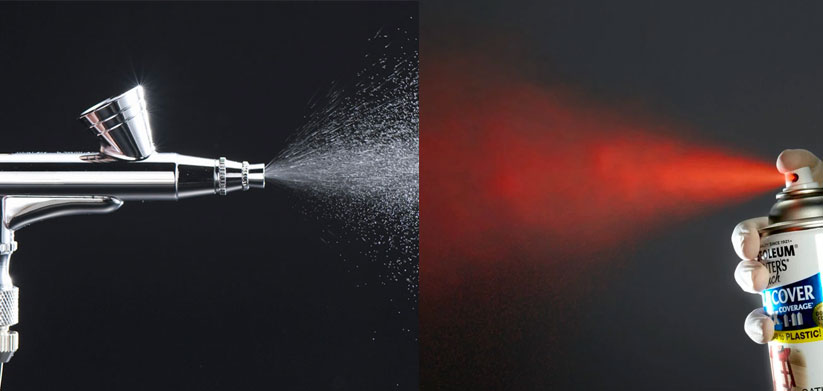
To better compare and contrast airbrush and spray paint, here’s a table outlining some key differences:
| Airbrush | Spray Paint | |
|---|---|---|
| Application | Fine details and precise control | Large areas and quick application |
| Control | Greater precision and control | Less control over the application |
| Cost | More expensive | Less expensive |
| Maintenance | Requires more maintenance | Easy to use and requires minimal preparation |
| Effects | It can create a variety of effects, such as gradients, fades, and fine lines | Limited effects |
| Safety | Safer to use with proper ventilation | Harmful if inhaled |
Regarding applications, airbrushes are best suited for projects that require fine details and precise control over paint application. For example, airbrushes are commonly used in automotive painting, illustration, and model-making.
On the other hand, spray paint is best suited for projects that require a large amount of color to be applied quickly and evenly. For example, spray paint is commonly used for outdoor furniture, automotive painting, and graffiti art. It is also famous for DIY home decor projects, such as repainting old furniture.
Choosing the right tool for the job is important because using the wrong tool can affect the outcome of a project. For example, using spray paint for fine details may result in uneven coverage and drips, while using an airbrush for a large project may take time and effort. By understanding the differences between airbrush and spray paint and their respective applications, you can choose the right tool for the job and achieve the desired outcome.
Techniques and Tips
Here are some tips for using airbrush and spray paint effectively:
Tips for using an airbrush:
- Before starting your project, practice on a test surface to get a feel for the airbrush and how it works.
- Use thin paint to prevent clogs and ensure smooth application.
- Maintain a consistent distance from the surface and use a steady hand to provide even coverage.
- Clean the airbrush thoroughly after each use to prevent buildup and maintain its performance.
Tips for using spray paint:
- Shake the can well before using it to ensure the even distribution of the paint.
- Hold the can 6-8 inches away from the surface and apply in even, sweeping motions.
- Apply multiple thin coats rather than one thick coat to prevent drips and ensure even coverage.
- Use a respirator or work in a well-ventilated area to avoid inhaling harmful fumes.
Common mistakes people make when using airbrush and spray paint include:
- Overusing color can lead to clogs and uneven coverage.
- Holding the airbrush or spray paint can be too close or too far from the surface, resulting in drips or uneven coverage.
- Not shaking the spray paint can well enough result in uneven distribution of the color.
- Not cleaning the airbrush or spray paint can thoroughly after use, which can lead to buildup and affect performance.
Resources for learning more about airbrush and spray paint techniques:
- YouTube tutorials: Many tutorials on YouTube demonstrate airbrush and spray paint techniques for different projects.
- Online forums: Joining online forums or communities dedicated to airbrush or spray paint can provide a wealth of information and resources.
- Classes or workshops: Many art supply stores and community centers offer courses or seminars on airbrush and spray paint techniques.
FAQ
Can you use spray paint with an airbrush?
No, spray paint cannot be used with an airbrush as they have different consistencies and application methods. Spray paint is typically used from an aerosol can, while an airbrush requires an air compressor to deliver the color.
Which is easier to use, an airbrush or spray paint?
This depends on the project and the user’s skill level. Spray paint is generally easier to use for larger projects or for covering large areas quickly. At the same time, an airbrush requires more skill and control but allows for finer details and more precise application.
Can you achieve the same level of detail with spray paint as you can with an airbrush?
Spray paint is typically used for larger areas and is less precise than an airbrush. An airbrush allows for finer details and greater control over paint application.
Is an airbrush more expensive than spray paint?
Yes, an airbrush and air compressor can be more expensive than a can of spray paint. However, the cost depends on the quality and features of the equipment.
How long does it take for airbrushed or spray-painted surfaces to dry?
The drying time depends on the type of paint used and the environmental conditions. Typically, spray paint will dry faster than airbrushed paint.
Can you use the same paint with both an airbrush and spray paint?
Yes, as long as the paint consistency is suitable for both application methods, it can be used with an airbrush and spray paint.
Is it necessary to wear a mask or respirator when using spray paint?
Yes, wearing a mask or respirator when spraying paint is essential, as it can release harmful fumes and particles.
Can airbrushing or spray paint be used on any surface?
Airbrushing and spray paint can be used on various surfaces. Still, the suitability depends on the type of paint and the surface being painted.
How do you clean an airbrush or spray paint can after use?
An airbrush can be cleaned with a specialized cleaning solution and water, while spray paint can be wiped down with a clean cloth and the nozzle cleared of any leftover paint.
Can you use stencils with both airbrushing and spray painting?
Stencils can be used with airbrushing and spray painting to create consistent and precise designs.
Conclusion
In conclusion, understanding the differences between airbrush and spray paint is essential when deciding which tool to use for a project. Airbrushes are best suited for projects that require fine details and precise control over paint application. In contrast, spray paint is best suited for projects that require a large amount of color to be applied quickly and evenly.
Using the right tool for the job and following proper techniques can achieve the desired outcome and avoid common mistakes such as overusing paint or not cleaning your devices correctly. With practice and experimentation, you can find the best tool for your needs and create stunning works of art.
In summary, airbrush and spray paint have advantages and disadvantages, and it’s essential to understand their differences to make an informed decision for your project. Feel free to experiment with both and find the one that works best for you. Happy painting!




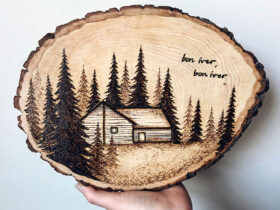
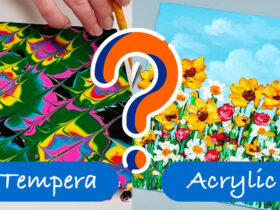
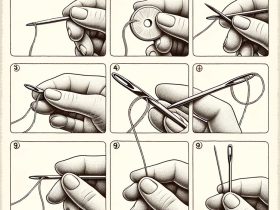
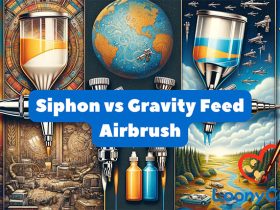

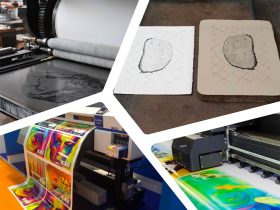


Leave a Reply